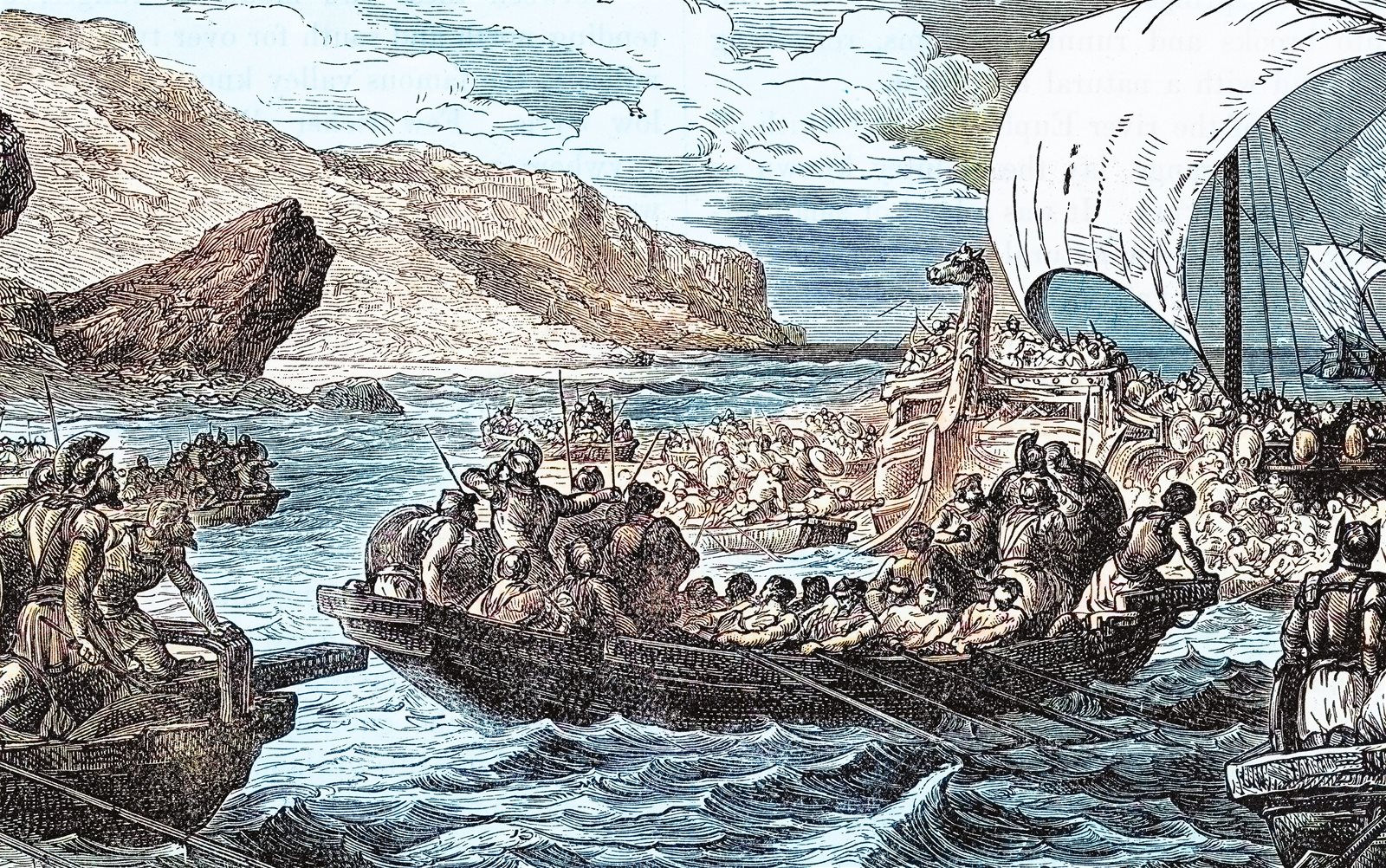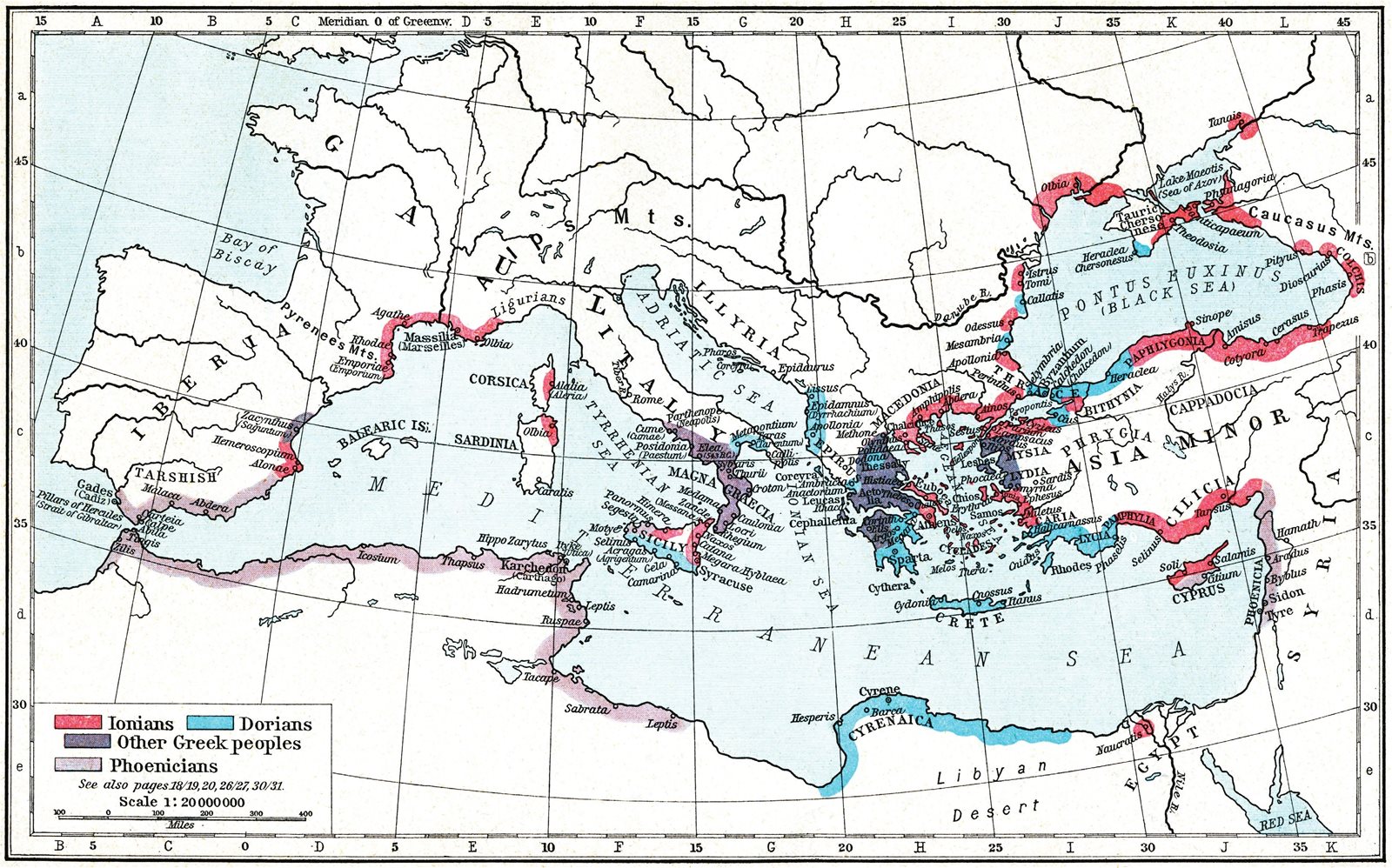
© Getty Images
The Phoenicians seem to have originated as a Semitic people from the Levant (equivalent to the modern coasts of Syria, Lebanon and Israel), stretching 320 kilometres from ancient Aradus (modern Arwad, Syria) to Mt Carmel and the town of Dor in Northern Israel. They were famed sea travellers and traders whose reach stretched throughout the Mediterranean to Spain, the western coast of Africa, and beyond. One anecdote about the extent of Phoenician mercantile ambition is that the murex sea snail – which was the source of the specific colour purple for dyes in the ancient world (known as Tyrian or Royal purple), and only found along the Phoenician coastline – was worked almost to extinction. Some theories hold that the Greek word Phoenicia (phoinix) itself meant ‘land of purple’ (the Greek word for the purple was phoinikes) – we don’t know for certain what they referred to themselves as, probably as inhabitants of each particular city. The Phoenicians had begun trading the murex dye in 1200 BCE, perhaps centuries earlier.
The Age of the Phoenicians is usually dated between around 1200 and 550 BCE, although Phoenician influence lasted into the 2nd century BCE. From around 550 BCE, however, Carthaginian civilisation took over as the dominant influence, especially in the western Mediterranean. Carthage was the most famous Phoenician colony (most matters related to the Carthaginians continued to be known as Poeni or Punic after their Phoenician origins – such as the various Punic wars fought with Rome).
“The Phoenicians spread their knowledge of seamanship, navigation and the alphabet”
Along with trade in coveted luxury items, the Phoenicians were in demand as seamen and they also spread their knowledge of seamanship, navigation and (perhaps most importantly) the alphabet.
This, obviously useful, mode of common communication between traders set up letter forms in various alphabets still obvious today (such as in the Greek and Latin alphabets) but also conventions such as reading right-to-left and horizontal text.
It was also a purely alphabetic script (with 22 characters) rather than a pictographic or hieroglyphic script where symbols could represent ideas or things. The Phoenician alphabet (developed around 1050 BCE) did not represent vowels, however, only consonants so in modern terms is an abjad or abgad – where vowels are implicit or inferred. It was soon adopted by the cultures the Phoenicians came into contact with, such as the Greeks. Although the term alphabet comes from the first two letters of the Greek alphabet (alpha and beta), it is obvious that that order came itself from Phoenician where the first letters were alep, bet, giml, dalt – the first four letters in many derivative alphabets (‘c’ took the place of ‘g’ in alphabets from the 3rd century BCE onwards).

All images: © Alamy, © Getty Images
The Mediterr anean in 550 BCE
The world of the Phoenicians explained
1 PHOENICI A NS
Phoenicia was located in what is now roughly areas of Syria and Lebenon, on the eastern coast of the Mediterranean. However, as this map shows, its major areas of regional influence were some distance away from its home base. It held influence over much of what is now the northern coast of Morocco, Algeria, Tunisia and Libya as well as southern Spain, in the western Mediterranean.
2 IONI ANS
The term Ionian refers to any Greeks who originated in the eastern side of the Aegean islands, operating from the western coast of Anatolia, in what is now Turkey. They had some interest in Asia Minor (now southern Turkey) and Spain, but their influence was most dominant in the Black Sea.
3 DORIANS
The Dorians were members of the Hylleis, Pamphyloi and Dymanes 'tribes' or phylai who conquered the Peloponnese around 1100-1000 BCE. Their influence emanated from the western half of the Aegean with settlements reaching north into modern Albania, to southern Italy, Sicily and a large stretch of the northern coast of what is now Libya and Egypt.
4 GREEKS
Alongside the Ionians and Dorians, other Greek groups divided up much of the rest of the Mediterranean coast with settlements and trading outposts, but were mostly confined to the Aegean itself or to southern Italy.